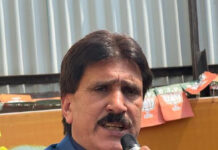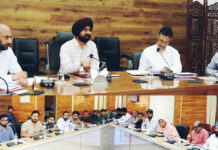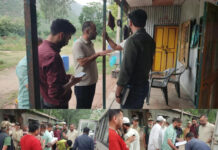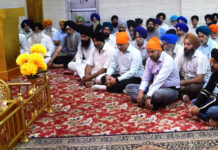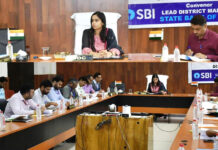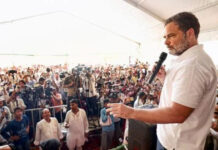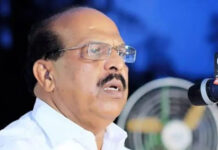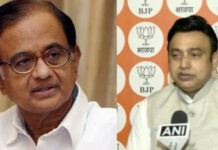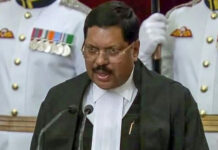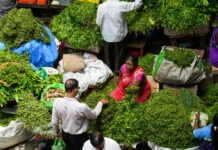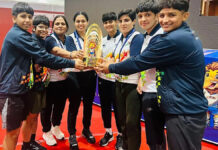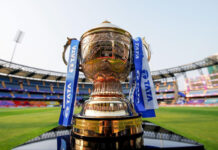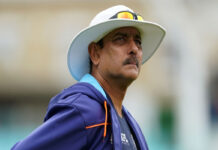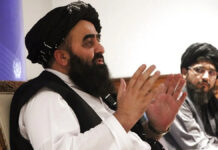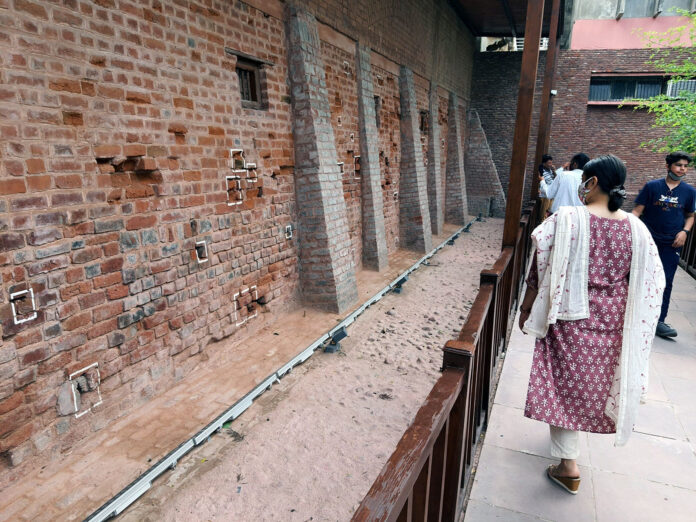NEW DELHI, Apr 12
It was said that the sun never sets on the British empire but on that fateful Baisakhi day in Punjab 105 years ago, it glowed a fierce red, just as a candle burns the brightest minutes before it extinguishes, casting a crimson hue over the golden yellow wheat fields. April 13, 1919, is immortalised in history as a black day for it bore witness to one of the most brutal and defining episodes of British colonial rule – the Jallianwala Bagh massacre.
Hari Ram Behal, a lawyer in the ‘Holy City’ of Amritsar, felt a sense of foreboding as he left to attend the doomed public meet against the draconian Rowlatt Act under which Indians could be detained without a trial. The headline of a Lahore newspaper at the time captured its essence in a pithy headline: “No dalil, no vakil, no appeal.”
An associate of educationist and freedom fighter Madan Mohan Malaviya, Hari Ram Behal was to deliver a speech with around 10 other friends. As they left, his wife Rattan asked them to stop at their house on their return for some kheer she had prepared to mark Baisakhi. Also headed for the protest site were 22-year-old Nanak Singh and his two friends, Sasthi Charan Mukherji, a doctor in his mid-30s, and 20-year-old Udham Singh.
At the Jallianwala Bagh – a misnomer, for it was a maidan (ground) rather than a garden – a large crowd (estimates oscillate between 15,000-25,000) had gathered. Some were there to celebrate Baisakhi, a few were there to enjoy a leisurely Sunday, and others were there to hear speeches that were just halfway through when Brigadier General Reginald Dyer entered the Bagh, with around 50 soldiers at around 5 pm. Without issuing any warning, he directed his troops to block the narrow exit and open fire at the hapless crowd. The doomed men and women jostled and tried to hide, but there was no escape. In moments of pure hysteria, some jumped into the well, where they were trampled beneath the weight of the many who followed suit; others tried to scale the walls from where they were shot down.
As per survivor accounts, Dyer kept directing the troops to fire at points where the crowd was the densest. The firing on the hapless men, women and children continued for 10 minutes. As many as 1,650 rounds were fired, and while the British put the official death toll at 379, many believe that the actual toll was in the thousands. Soon after, Dyer imposed a strict curfew in the area, effectively ensuring that help would not reach the wounded. Among those whose blood soaked the Jallianwala Bagh were Hari Ram Behal and his friends. His grandson, Mahesh Behal, 73, president of the Jallianwala Bagh Shaheed Parivar Samiti, grew up hearing stories of his grandfather’s martyrdom. “My grandfather was hit twice, in the chest and the thigh. One of my grandfather’s friends managed to escape and ran to our house, which was less than half a kilometre away. My unsuspecting grandmother initially thought he had come to have some kheer. Our relatives somehow managed to bring his body from the Bagh.
He was semi-conscious despite his bullet wounds and kept asking for water. His last act was consoling my grief-stricken grandmother (who was in a bolt out of the blue a single parent), and urging her to raise the kids as revolutionaries,” he says, adding that his grandfather’s death threw the family into financial turmoil.
“My father was two-and-a-half years old at the time. He had to join the workforce when he was extremely young, while my grandfather had been able to complete his education and set up a law practice,” he adds. Nanak Singh, who would go on to be referred to as the father of the Punjabi novel, was knocked unconscious by the stampeding crowd and left for dead. However, his two companions were not as lucky.
His grandson, former ambassador of India to UAE and Egypt and former high commissioner to Australia, Navdeep Suri says, “He walked away utterly traumatised, and never spoke of it again. But, he wrote a searing ballad called Khooni Vaisakhi, which was first produced in 1920. It was soon banned by the British and all copies confiscated. Over the next 60 years, he wrote 59 books, including 39 novels. The lost poem was rediscovered in 1979. I translated it to English ahead of the centenary celebrations in 2019 so that a wider non-Punjabi speaking audience could also understand it.”
The traumatised survivors included Mukherji – three generations of his family have been caretakers of the Jallianwala Bagh National Memorial Trust – and Udham Singh, who would go on to exact revenge on Sir Michael Francis O’Dwyer, the former lieutenant governor of Punjab; the wrong Dyer, but culpable all the same.
Recalling the story he had heard of that fateful day, the grandson of the former, Sukumar Mukherji, says, “My father, all of 10, was sent to look for my grandfather after the massacre. But, someone told him Dyer had returned to the site, so he ran back home.” It is said Bhagat Singh visited the scene of the Jallianwala Bagh massacre soon after the incident and even collected blood-soaked soil from the site. The massacre was a seismic incident in India’s freedom struggle, with its tremors felt at home and abroad. In protest of the Jallianwala Bagh atrocity, Rabindranath Tagore renounced his knighthood, saying Britain could no longer claim any “political expediency, far less moral justification” and Mahatma Gandhi launched the non-cooperation movement.
Given the widespread outcry against the massacre, former UK Prime Minister Winston Churchill could not turn a blind eye to the mass murder and termed it “a monstrous event, an event which stands in singular and sinister isolation”.
The other side of the story
While today Dyer is remembered as the ‘Butcher of Amritsar’, in 1919 many found nothing wrong in Dyer’s actions. In the West, many Britons – most notably, Rudyard Kipling, who wrote the poem The White Man’s Burden – said that it was necessary to crush the civil disobedience movement.
To understand why there were no significant reprisals against Dyer one must understand that by April 1919, the British were concerned about a rebellion on the scale of the 1857 revolt. On April 10, a crowd had gathered at a bridge near Civil Lines, where most Britishers’ residences were, demanding the release of Congress leaders Satya Pal and Saifuddin Kitchlew, who had been arrested for protesting the Rowlatt Act. Seeing the crowd, the officers fired, turning it into a mob that started vandalising government property. The mob also attacked Europeans and killed three bankers and two railway employees. A British teacher also fell into the hands of the crowd and was assaulted and molested. Some historians say that it was this indignity that led to the massacre, as in the days after the massacre, anybody passing the lane, then known as Kucha Kurrichhan, where she was assaulted, was ordered to crawl through it or risk flogging.
It was in this situation that Dyer, the commandant of the infantry brigade in Jalandhar (then Jullundur), left for Amritsar and imposed a curfew. However, by his own admission, the information that a curfew had been imposed had not been widely propagated. In another theory, whose primary proponent is the historian VN Datta, the slaughter was pre-planned in connivance with the organiser of the event Hans Raj. Hans Raj escaped the massacre and went missing for days until he emerged as an approver in the Amritsar conspiracy trials, and helped the British convict the two arrested Congress leaders. Hans Raj was later relocated to a different country. Back home, an angry mob vented their anger by setting his house aflame. Bal, however, does not believe that any conspiracy was afoot as “90 per cent of people were there for Baisakhi”.
Then there are questions about why the troops that comprised Indian soldiers fired at their own. “First of all, armies are trained to follow orders. At that time, there was no feeling of India. Dyer purposely chose people who were not from Punjab. No Sikh soldier was taken to the Bagh. The Baloch and Gorkhas were chosen because they were distant from the victims,” says Bal.

